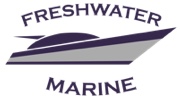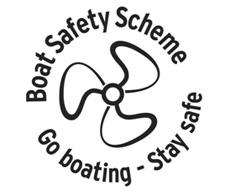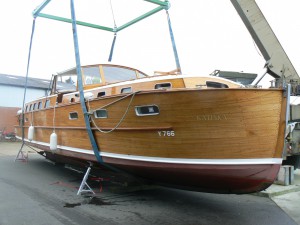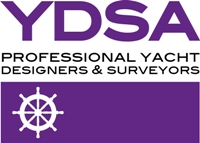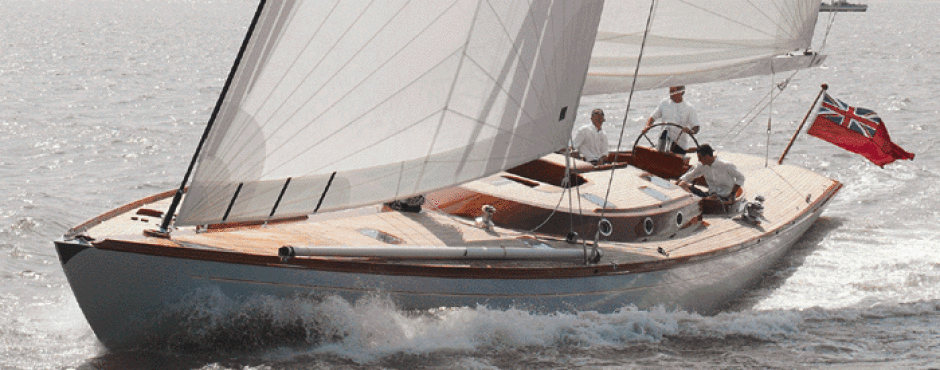
LPG Fire Safety on Boats – CO can killMay 13, 2014
 CO is a highly poisonous gas that weighs about the same as air.At high concentrations, CO can kill without warning, sometimes in only minutes.It cannot be seen, smelt, tasted, or felt, that’s why it’s known as the silent killer! CO is a highly poisonous gas that weighs about the same as air.At high concentrations, CO can kill without warning, sometimes in only minutes.It cannot be seen, smelt, tasted, or felt, that’s why it’s known as the silent killer!
When you breathe in CO, it replaces the oxygen in your bloodstream, preventing essential supplies to your body tissues, heart, brain and other vital organs. Where victims survive severe CO poisoning, they can be left with long-term brain damage such as poorer concentration, or causing mood swings, etc. But even breathing-in lower levels of CO over a longer period, you can still suffer serious effects such as memory problems and difficulty concentrating. |
Some people will be affected much more quickly:-
For other reasons, some people may be at higher risk:
|
LPG Fire Safety on Boats – Carbon Monoxide
180x180.jpg) |
Investigations start following the death of two people from CO poisoning.
“Each year boaters die or are made seriously ill from carbon monoxide (CO) poisoning – Boats are built to keep water out, but this also makes them good containers for gases and fumes.” |
When carbon-based, appliance and engine fuels, such as gas, LPG, coal, wood, paraffin, oil, petrol and diesel don’t burn completely, CO is produced.
CO build-up in the cabin can occur with one or a mix of these factors:
- with faulty, badly maintained, or misused appliances
- exhaust fumes from a boat’s engine or generator
- escaped flue gases from solid fuel stoves
- blocked ventilation or short supply of air – fuels need the right amount of oxygen to burn safely
10 tips to keep you alive!
For more detail read the information on the pages linked by the buttons on the left, or click next – How the silent killer works! or download the pdf booklet by clicking on the image on the right |
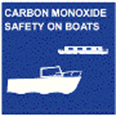 |
Copyright belongs to the owners of the Boat Safety Scheme and CoGDEM jointly.
This information may be freely reproduced, except for advertising, endorsement or commercial purposes. Please acknowledge the source as Boat Safety Scheme & CoGDEM.
LPG Fire Safety on Boats – Portable LPG
Boat owners are advised to avoid using portable gas appliances with integral gas canisters on board boats
Boat owners to treat all such portable gas equipment with great respect and change fuel canisters away from the boat and sources of ignition.Even portable gas equipment can cause an explosion big enough to send people to hospital.Escaped lpg from only one can form a flammable gas cloud the size of 250 cans.In the poorly ventilated, tight confines of a boat escaping gas is more dangerous than when it happens ashore out in the open.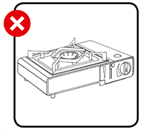 |
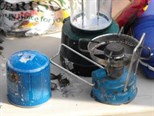 An explosion on the Norfolk Broads saw two people taken to hospital for treatment for burns to their legs, hands and faces.The explosion happened when the gas canister of a camping stove was being changed in the open cockpit of a small sailing boat where candles and cigarettes were in use. An explosion on the Norfolk Broads saw two people taken to hospital for treatment for burns to their legs, hands and faces.The explosion happened when the gas canister of a camping stove was being changed in the open cockpit of a small sailing boat where candles and cigarettes were in use. |
Think about the alternatives, for example, if all you want is a hot drink onboard a day boat, a flask is probably the simplest and safest way. If wanting light, some battery powered or wind-up LED lights will last for ages and are far easier to use than gas lanterns.
Where a simple cooker is needed aboard, think about installing a marine spirit stove as an alternative to a portable gas stove.
Anyone using a portable gas appliances has to be completely familiar with the correct and safe way of operating the appliance, from taking out of its storage case to fitting new fuel canisters.
- Only use portable appliances onshore.
- Stow the canisters, used or unused and any appliance if it has a canister inserted, in a self-draining gas locker, or on open deck where any escaping gas can flow overboard.
- Be familiar with the operating instructions before use.
- Before you start, check the appliance’s condition, if the gas canister seal looks damaged, or if the appliances or gas canister is extremely rusty and deteriorated, do not use it.
- To avoid gas leaks and carbon monoxide poisoning check that all equipment has been correctly assembled before turning it on.
- Never attempt to fit a new canister to an appliance when aboard, wait until you are onshore.
- Before fitting a canister, put out all open flames and smoking materials.
- Ensure that you have the correct type of gas canister for your appliance and that it is being inserted in the right place and in the right way.
- If you smell or hear gas leaking before attempting to light an appliance, don’t use it.
- If any gas is leaking, ensure that it is being dispersed in free air well away from the boat or any sparks or other sources of ignition.
Inland waterway regulations do not ban portable gas equipment on boats, but when not in operation, any appliance with a canister fitted and all spare gas canisters, empty or full, must be stowed in lockers that are self-draining, or on open deck areas where any leaking gas will flow overboard. The risk of causing a pool of explosive vapour inside the boat must be avoided.
LPG Fire Safety on Boats – BBQs
 |
Never use a barbecue (BBQ) on board a boat – take it ashore, enjoy it safely and avoid the twin risks of fire and carbon monoxideBBQing off the boat reduces the risk of setting fire to decks and on-board combustible materials from the heat from the red hot charcoal or loose embers. |
| When BBQing ashore remember to be careful not to place a disposable BBQ where it could set alight wooden jetties, boardwalks, or dry grass and vegetation.BBQs need to be far enough away from the boat so that any hot embers blowing in the wind can’t reach boat furnishings, or any anything else that can burn, like newspapers or clothes. |  |
 |
BBQs need to be far enough away from the boat so that any hot embers blowing in the wind can’t reach boat furnishings, or any anything else that can burn, like newspapers or clothes.When the BBQ is lit, keep a bucket of water or your fire extinguisher nearby. |
Don’t forget the carbon monoxide (CO) risk
BBQs continue to produce dangerous amounts of CO for hours after the cooking is over.
It is never safe to have a lit or cooling BBQ in a cabin or covered cockpit area. The only safe charcoal is that which is absolutely stone-cold.
And because of the risk of both fire and CO…
…you cannot drop your guard
Before you dispose of a used charcoal double-check that it is completely cold to the touch, either
Let charcoal burn out and go cold in a safe place protected from wind, or pour water onto the fire.
Used charcoal should be disposed of responsibly.
| For more BBQ and outdoor fire safety advice go to the Fire Kills Fire safety leaflets download on Facebook |
Boat Safety | Gas Alarms – LPG Fire Safety on Boats
Fire prevention is always your primary protection from fire on boats but a smoke alarm can be your next line of defence, particularly if you sleep aboard. Smoke from a boat fire will affect your ability to breathe, a sensation similar to drowning. With two to three breaths of toxic smoke you could be unconscious. A working smoke alarm of the right type can warn you very quickly of the danger and buy you precious seconds to escape.
| Choices, choicesThese guidelines tell you about choosing the best types of smoke alarms for your boat, the best place to fix them and how to maintain them for maximum levels of protection. Even as a day boater if you feel at risk from being surprised by fire, please read on. Detecting fire Fires happen when you least expect them and will put you in most danger when you are in deep sleep. Boats are often full of combustible materials and highly flammable fuels, which mean that fire can spread rapidly, damaging property, injuring and killing people. But the real killers are smoke and toxic fumes which kill very rapidly. If you are asleep, your survival will almost certainly depend upon being woken very quickly before the smoke and fumes reach you. | Being alerted to a fire will help you escape.If there is a fire, a reliable smoke alarm can warn you and your family early enough to allow you to escape. Smoke alarms are cheap, and readily available in chandleries, high-street stores, supermarkets, DIY stores and online suppliers. They are easy to fit and maintain. Make a fire action plan now A reliable alarm alone, won’t by itself keep you safe. All crew and passengers must know what to do in an emergency – make a fire action plan, make sure everyone knows it, every time you sail. |
 Fit alarms and replace them when outdated (check the date label on the alarm). Fit alarms and replace them when outdated (check the date label on the alarm). |
 Never remove batteries and replace the batteries when they have lost power. Never remove batteries and replace the batteries when they have lost power. |
 Test alarms when returning to the boat, then at least weekly when staying aboard Test alarms when returning to the boat, then at least weekly when staying aboard |
For more information contact European Marine Services Ltd. Marine Surveyors & Consultants
EMS also undertake Boat Safety Inspections & Engine Inspections
www.europeanmarinesurveys.com
Tel: 01603 327 123
Marine surveyors ” Seven River Challenge ” Kayak Challenge
Our marine surveyors ” Seven River Challenge ” Kayak Challenge
Louis Bodmer – European Marine Surveyor
Over the recent Bank Holliday weekend I had the pleasure of taking part in a charity kayaking ‘7 River Challenge’ to raise money for Cystic Fibrosis.
With a group of Norfolk friends we decided to sail the ‘Seven Rivers’ from Norwich to Wroxham in 3 days in Kayaks! All 12 kayaks including a double with trusting dog set off on the River Wensum from Norwich Yacht Station at 8am on Friday morning. Tailed closely by safety boats, we aimed to reach the Berney Arms Pub at the mouth of Breydon water by the early evening. This proved to be a challenging long first day with 7hrs 30minutes of paddling. But thanks to our Navigator, the tide was ebbing in the right direction encouraging us along. A welcomed fresh Pint and a warm fire pleasantly awaited us at the pub.
The following morning had to be an early start to ensure we would have the tide running with us across the large stretch of Breydon water. It was a beautiful still morning welcomed by the early morning call of the Oyster Catcher and wild geese as the sun rose over the misty calm water. The wilderness soon disappeared and the urban landscape and road bridge loomed ahead. As we paddled under the Yarmouth bypass bridge there was the yellow post leading us into the River Bure to what felt like the beginning of the way home. We struggled a bit against the tide as we came towards the yacht station in Great Yarmouth, but we were glad to know a hearty breakfast was awaiting us. Moral was boosted knowing we were aiming for the Lion Inn (not a lie in!) at Thurne for the night.
With our two longest paddling days past, up the Ant we paddled two by two as far as Ludham Bridge. We then turned back towards Wroxham and home, celebrating by 4pm on Sunday. Easily said, but it was a long last leg!
In total we raised over £3000 with approximately 55 miles of paddling!
Thank you all for your support.
OIL SPY – Pre Season PreparationMarch 26, 2014
Marine Surveyor – Recommendations
Hi There – Boat Owners
In this blog European Marine Surveys are offering advice for Pre-Season Preparation
OIL SPY
Ideal pocket – toolbox tool for immediate results. For all marine enthusiasts whether commercial users, hire fleet operators, private boat owners …..in fact any powered vessel. Most owners know their engines and our OILSPY test will help you to fully understand what is going on internally in your engine.
This is not a replacement for laboratory oil analysis but an additional tool for instant ‘on site’ visual results. Advance notification of any oil deterioratiobn is a certain method of safeguarding your engines from any possibility of component or lubrication breakdown/failure.
If you are thinking of buying or selling a boat then an instant test can give you a good indication of oil condition and will help in identifying coolant leaks, fuel dilution, oxidation, sediment, sludge formation and wear debris. Each boxed kit contains 20 test cards. Consider taking your boat for an engine service……take a test before and after……..was the engine flushed and the oil changed….OILSPY can tell you. Buying a used boat…take a test run, take the OILSPY test……you only need a drop of warm oil from the dipstick to give you peace of mind on engine condition
Oil Spy – For less than £ 26.00 per box (plus P&P) of 20 test cards
For more information contact European Marine Services Ltd (inc European Marine Surveys) 01603 327 123 end_of_the_skype_highlighting www.europeanmarinesurveys.com
1960 Broom 42 Admiral Class | Pre Purchase Survey | # 00729
Welcome to European Marine Surveys, based in the heart of East Anglia & the Norfolk Broads. As marine surveyors we undertake inspections of all types (including the popular pre-purchase survey) of marine craft from classic broads wooden yachts, ex hire boats, inland waterway craft, house boats, steel narrow boats Plus offshore yachts, large ocean going motor boats, sports cruisers & many more types since the 1980s.
We below provide information on surveys of interest
1960 BROOM 42 ADMIRAL CLASS ‘Katinka’
In February we were instructed by Broadland Yacht Brokers on behalf of their client to undertake a Pre Purchase Inspection on the 1960 classic Broom Admiral Class 42′ ‘Katinka’ Other than a few minor problems this 54 year old broads motor cruiser passed with flying colours and is a credit to her owners and Broom Boat Builders
We have reproduced the below from Anglia Afloat Magazine for your information
Irish-born Buckinghamshire resident businessman Emmet Hart is one lucky son of a gun, he owns the iconic Katinka, arguably one of the most beautiful motor cruisers ever built. Katinka was built in 1960 to a 1940s design by CJ Broom & Sons in Brundall, Norfolk, the very last wooden Broom ever built by the UK’s longest established motorboat manufacturer founded in 1898.
She’s a customised version of the Admiral class, which at the time was the largest boat built by Brooms at 42ft. She is unique, having been privately owned by the same family for 52 years.
Built for Professor Jack Mayne of Cambridge in 1960 she remained in the factory’s wet boathouse and was maintained by Brooms for fifty-two years, with any work required during her lifetime being carried out by the Broom factory. Since her launch in 1961 she has only cruised a total of 791 hours, 12 of those under her new owner.
Katinka’s hull is built of Iroko on oak frames, a bespoke build strengthened and lengthened slightly for coastal voyages to enable her owners to explore the numerous rivers and inland waterways around the UK. Completely varnished to the waterline and antifouled below and with varnished Mahogany coachroof and cabin sides she is a stunningly elegant craft.
Stunning finish – Down below she is finished in gleaming varnished Mahogany, with white enamelled locker fronts and deck heads and with new light-coloured upholstery throughout is light and airy. She still retains most of her original fixtures and fittings but has a newly fitted galley with fridge freezer, combination cooker and hob, Webasto warm air heating and electric heads.
There’s an open cockpit aft with surrounding bench seating. Double swing doors lead into the full width galley; to port is a new gas cooker and hob, full size front opening fridge and a generous worktop, while to starboard is more worktop with a s/s sink and drainer and cupboards under.
Forward of the galley is the main saloon with settees that convert to single berths, a folding central dining table with cutlery drawer that will seat six in comfort. There’s storage drawers under the settees and a low-line cupboard each side aft. At the forward end is a large double cupboard to port and a large heads with electric WC and washbasin, to starboard. Offset to port is a set of steps leading up into the spacious central cockpit. The side windows all hinge at the bottom and tilt inboard to rest on wedge-shaped wooden brackets when open. Lower windows in the hull are permanently sealed.
The control console is mounted to port, with the access companionway to the forward accommodation to starboard. The original stainless steel instrument panel looks almost as good as new and the tacho reads 791 hours on the 3.4 litre BMC Commodore engine under the cockpit sole. This pushes her along at a comfortable cruising speed of eight knots up to a maximum of 10 knots.
Also under the floor are the fuel and water tanks and batteries, putting the bulk of the weight in the centre of the craft and giving her an even trim and reducing the motion at sea.
The cockpit hard top folds back over the aft coachroof to give open air motoring on fine days and reducing the air draught for ducking through Broads’ bridges.
Owner’s accommodation – The forward companionway leads down to the owner’s double berth thwartships cabin with double berth to port with locker stowage and dressing table and wardrobe to starboard. Also under the bunk is a Webasto heating unit feeding warm air throughout the whole craft. Further forward again is a large family heads to port and a shower to starboard with a twin-berth cabin in the forepeak. Stowage is in large drawers under the berths and a large hanging locker by the companionway.
Emmet Hart bought Katinka in early 2013 as a substitute for his 37ft motor cruiser Snowgoose while she was being restored at Oulton Broad-based International Boatbuilding Training College. Interestingly, the two Norfolk built boats had been completed within a year of each other yet they clearly hail from different eras. Katinka is unquestionably a 1940s motor cruiser with a few minor concessions to the 1960s whereas Snowgoose is more in keeping with the era of her construction.
E C Landamore & Co built Snowgoose for Edward Suckling in 1962. Originally named Eclan in honour of her builders she was based on the design of the company’s 5-berth Vestella class motor cruisers.
However, the completion of Snowgoose’s restoration in October 2013 presented Emmet with a real dilemma, which boat should he keep? While he is in the fortunate position to be able to fund the running costs of both boats he feels that they should be regularly used rather than gathering dust in a boat shed.
Having enjoyed a memorable summer of cruising in Katinka, which included several months on the Thames where her immaculate appearance caused quite a stir during the Henley Royal Regatta, he reluctantly decided to put her up for sale to see if a new custodian can be found for this remarkable slice of Broadland history. If not, Emmet will simply continue to enjoy the contrasting qualities of two of the region’s finest classic motor cruisers.
Katinka Specification:
LOA: 43ft LWL: 42ft Beam: 10ft 6in Draught: 2ft 6in Air Draught: 6ft 4in Cruising Speed: 8 knots Max Speed: 10 knots
For more information contact European Marine Services Ltd
Tel European Marine Surveys on 01603 327 123
Diesel Fuel Treatment in Boats – Recommendations
Hi There – Boat Owners
In this blog European Marine Surveys are offering advice for Pre-Season Preparation
Diesel Treatment
There are known to be over 20 species of fuel bugs that can contaminate your fuel storage tank. If the conditions are suitable they ‘move in’ and start to multiply. The fungal spores are carried by air and water, entering your fuel system via filling ports and vents. The air space above the fuel in tanks contains water vapor. The walls of the tanks are cool and the water vapor condenses on these surfaces. This water subsequently accumulates and sinks to the bottom of the tank creating an ideal environment for the growth of the most common of fungi “Cladisporium Resinae”. Once in a fuel supply this contamination can exist virtually undetected and wait for the right conditions for growth. They can double their numbers every 20 minutes and one single spore can produce over 260,000 cloned descendants in six hours. Each spore lives for about 48 hours and as older fungi die their bodies accumulate, forming a slime that ultimately floats upwards into the fuel, a bit like soft candy floss so it doesn’t take long for the fungi to dominate the entire fuel system.
Diesel Bug Test Kit – The individually packed Marine 16 diesel bug test-kit can be used to check for microbial contamination of diesel fuels in boats, storage tanks, home heating fuels etc. Contains full instructions of use, results in approx 3-4 days One test per kit. We can in addition provide a full oil & fuel laboratory analysis service including bug/bacteria testing for all types of industries.
Diesel Bug Treatment – Is specifically designed to prevent and eradicate diesel bug contamination. It will disperse into both fuel and water phases and will remain active in the fuel for over a year. As you use the treated fuel it will eliminate growth throughout the fuel feed system.
Diesel Bug Treatment – For as little as £12.00 you can treat a full tank of diesel
For more information contact European Marine Services Ltd (inc European Marine Surveys) 01603 327 123 www.europeanmarinesurveys.com
Marine Surveyor – Louis Bodmer – WelcomeFebruary 25, 2012
European Marine Services Ltd / European Marine Surveys – Are delighted to welcome Louis Bodmer as a new Associate. Louis will be undertaking general marine surveys on vessels up to approx 40′ and encompassing most materials.
Before passing his YachtMaster Offshore at the UKSA on the Isle of Wight in 2001, Louis was working for five years on board charter boats in Greece. With his tickets in hand, Louis then made his way sailing the world as crew and First Mate on privately owned 55ft-137ft Superyachts and Classic yachts. He has now logged up to 64.000 n.m during his professional worldwide sailing activities; sailing several times accross the Atlantic Ocean and skippering on delivery trips and participating in numerous Classic Races in the Mediterranean & Caribbean Seas.
During his fifteen years working at sea, Louis has gained a wide knowledge of boat construction and maintenance. He has also managed several extensive refits based in Italy and Spain, as well as worked in specialised boat yards in the UK. Louis has now decided to move ashore and transfer his skills and knowledge to the surveying field.
Louis Bodmer has completed the Yacht & Small Craft Surveyor’s course at the IIMS.
He has also successfully completed a 2 year full time course in small wood boat construction at the Oulton Broad Training School
Louis has comprehensive PI Insurance with European Marine Services Ltd
For more information contact European Marine Services Ltd (inc European Marine Surveys) Tel : 01603 327 12301603 327 123 www.europeanmarinesurveys.com



